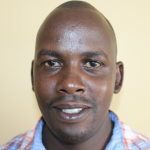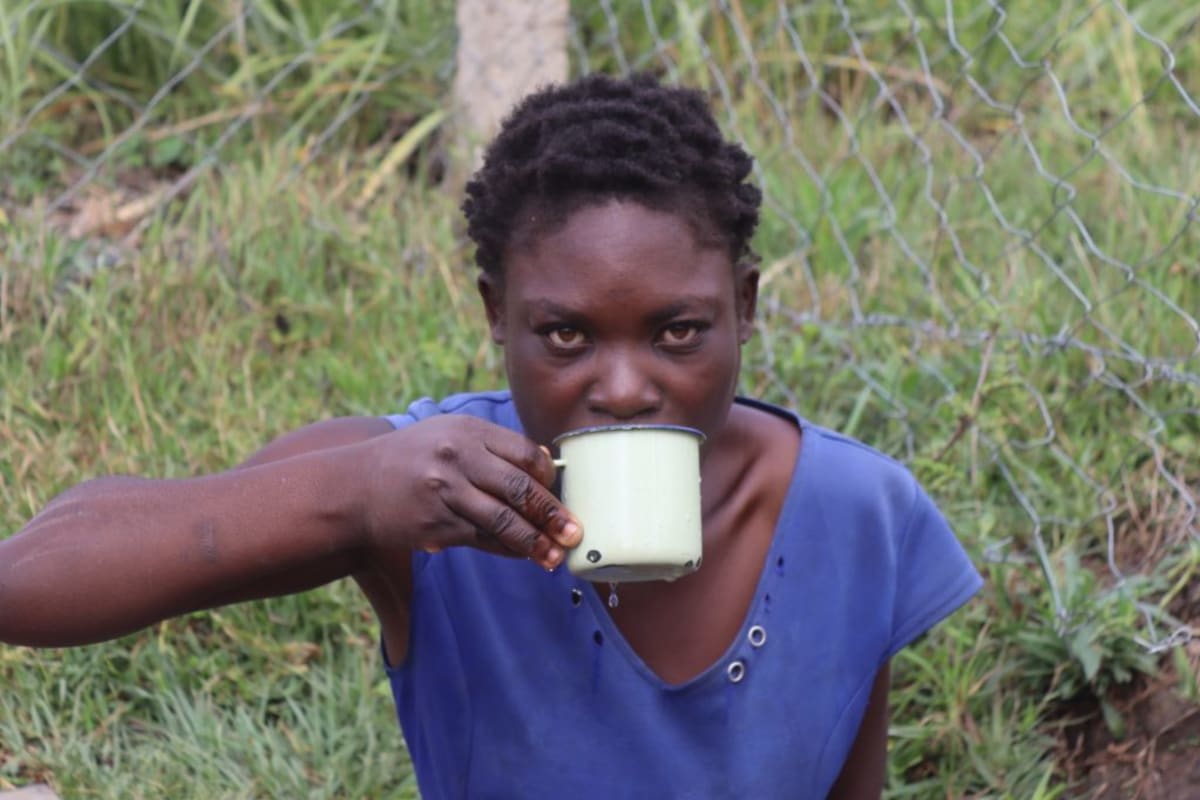George Luvande Spring is found in the village of Chimoroni. The area is unique and beautiful because it lies almost at the foot of the Nandi Escarpment (a steep slope that separates land of two different heights), and is surrounded by plenty of plantations, providing a lush, green landscape.
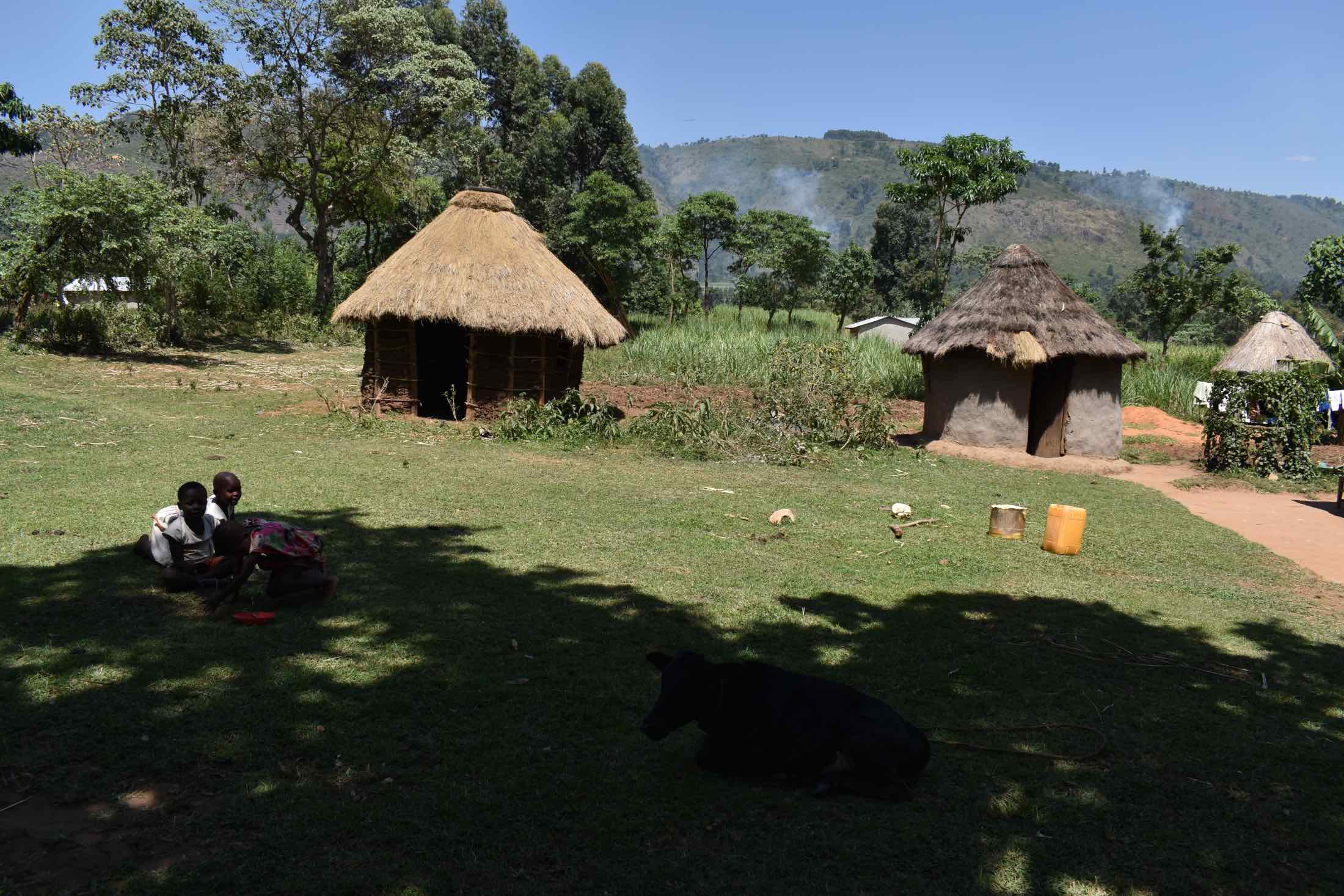
The 140 community members live below the poverty level, and the majority are peasant farmers. They grow different small-scale crops mostly for consumption, with any surplus sold to meet daily needs.
The water crisis in this area makes people travel long distances in search of water. Community members only have this one water point located quite a distance from most of their homes. It is surrounded by sugarcane plantations, grazing fields, and plowed land, ready for maize planting.
According to Mrs. Luvande, during the dry season, when wells in the surrounding areas dry up, they face many overcrowding challenges at the spring, leading to long queues. A person has to wake up very early (by 6) to collect drinking water.
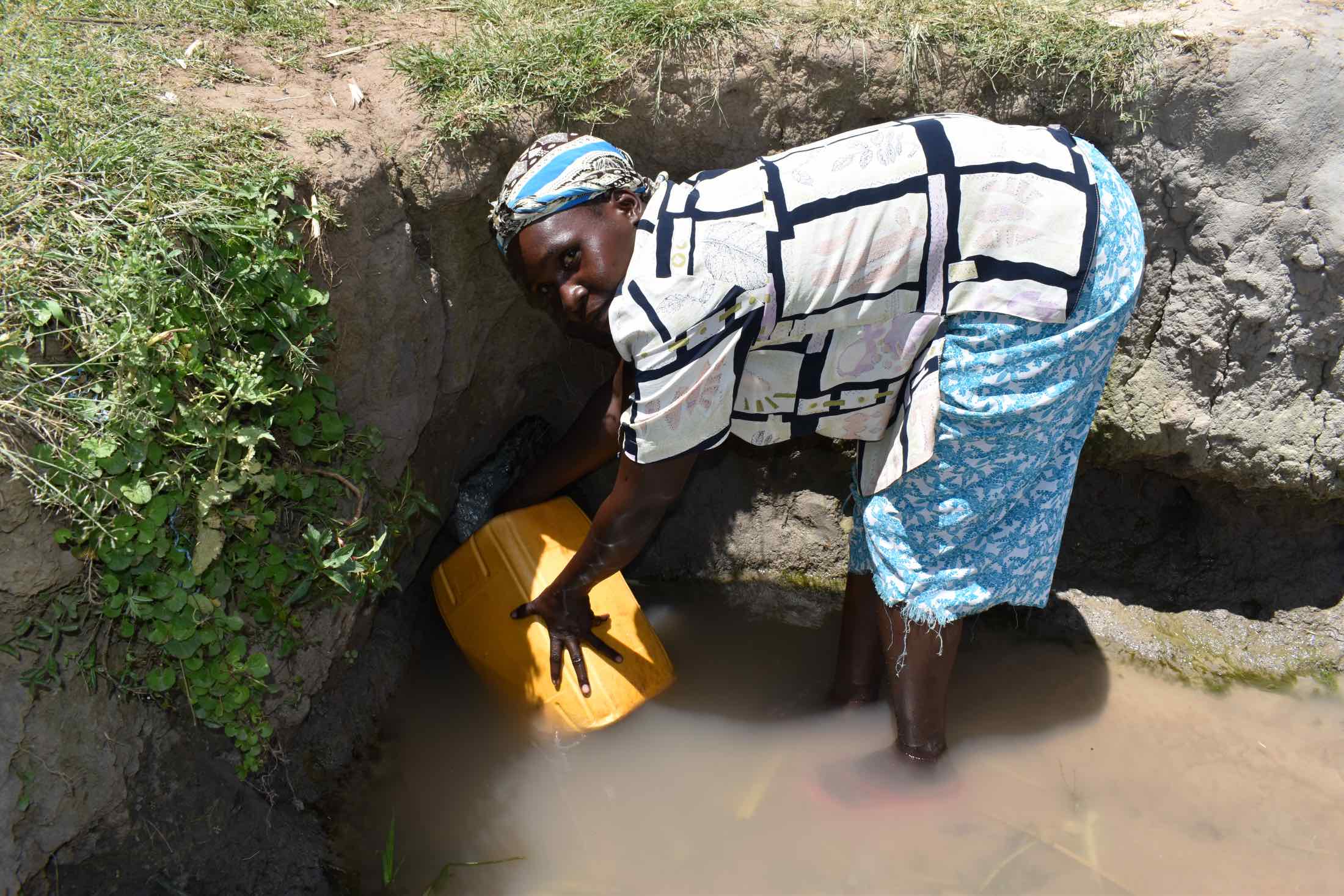
Sarah Makona, a local farmer, shared a similar complaint. "Currently, during the dry spell like it is now, a lot of people are coming from different places for drinking water. This makes the water point overcrowded, especially in the morning and evening hours. So you have to wake up very early in the morning to collect water for drinking and for household chores for you to get enough time for other day's activities."
Some of the greatest challenges with this spring are for a person to draw water, they must step into the water, and the water they take home is stagnant because the spring has no drainage around the collection point.
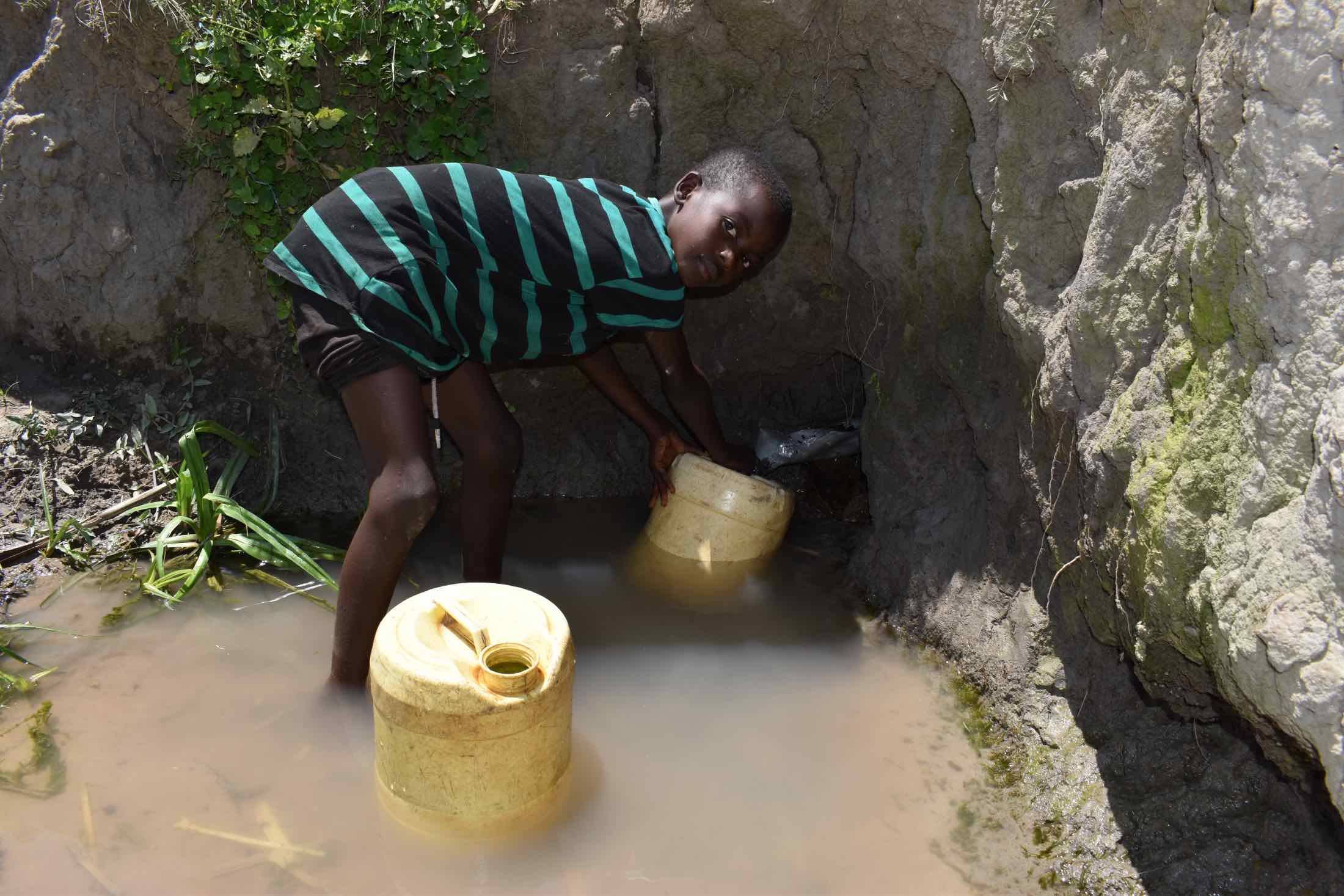
Isaac M., age 8, shared, "When you are sent collecting water in the morning from this spring when it's so cold, [it] makes me feel like crying because imagine you have to step in water for you to collect it. Moreso, if the queue is so long, you have to wait, and other people come late and have to draw water before you, and you can't complain of it."
Young children are also victims of waterborne and water-related diseases like typhoid when drinking water from this source, especially during the rainy season, when the water is exposed to even more contamination from area runoff.
What We Can Do:
Spring Protection
Protecting the spring will help provide access to cleaner and safer water and reduce the time people have to spend to fetch it. Construction will keep surface runoff and other contaminants out of the water. With the community’s high involvement in the process, there should be a good sense of responsibility and ownership for the new clean water source.
Fetching water is a task predominantly carried out by women and young girls. Protecting the spring and offering training and support will, therefore, help empower the female members of the community by freeing up more of their time and energy to engage and invest in income-generating activities and their education.
Training on Health, Hygiene, COVID-19, and More
To hold trainings during the pandemic, we work closely with both community leaders and the local government to approve small groups to attend training. We ask community leaders to invite a select yet representative group of people to attend training who will then act as ambassadors to the rest of the community to share what they learn. We also communicate our expectations of physical distancing and wearing masks for all who choose to attend.
The training will focus on improved hygiene, health, and sanitation habits in this community. We will also have a dedicated session on COVID-19 symptoms, transmission routes, and prevention best practices.
With the community’s input, we will identify key leverage points where they can alter their practices at the personal, household, and community levels to affect change. This training will help to ensure participants have the knowledge they need about healthy practices and their importance to make the most of their water point as soon as water is flowing.
Our team of facilitators will use a variety of methods to train community members. Some of these methods include participatory hygiene and sanitation transformation, asset-based community development, group discussions, handouts, and demonstrations at the spring.
One of the most important issues we plan to cover is the handling, storage, and treatment of water. Having a clean water source will be extremely helpful, but it is useless if water gets contaminated by the time it is consumed. We and the community strongly believe that all of these components will work together to improve living standards here, which will help to unlock the potential for these community members to live better, healthier lives.
We will then conduct a small series of follow-up trainings before transitioning to our regularly scheduled support visits throughout the year.
Training will result in the formation of a water user committee, elected by their peers, that will oversee the operations and maintenance of the spring. The committee will enforce proper behavior around the spring and delegate tasks that will help preserve the site, such as building a fence and digging proper drainage channels. The fence will keep out destructive animals and unwanted waste, and the drainage will keep the area’s mosquito population at a minimum.

 Protected Spring
Protected Spring
 Rehabilitation Project
Rehabilitation Project











